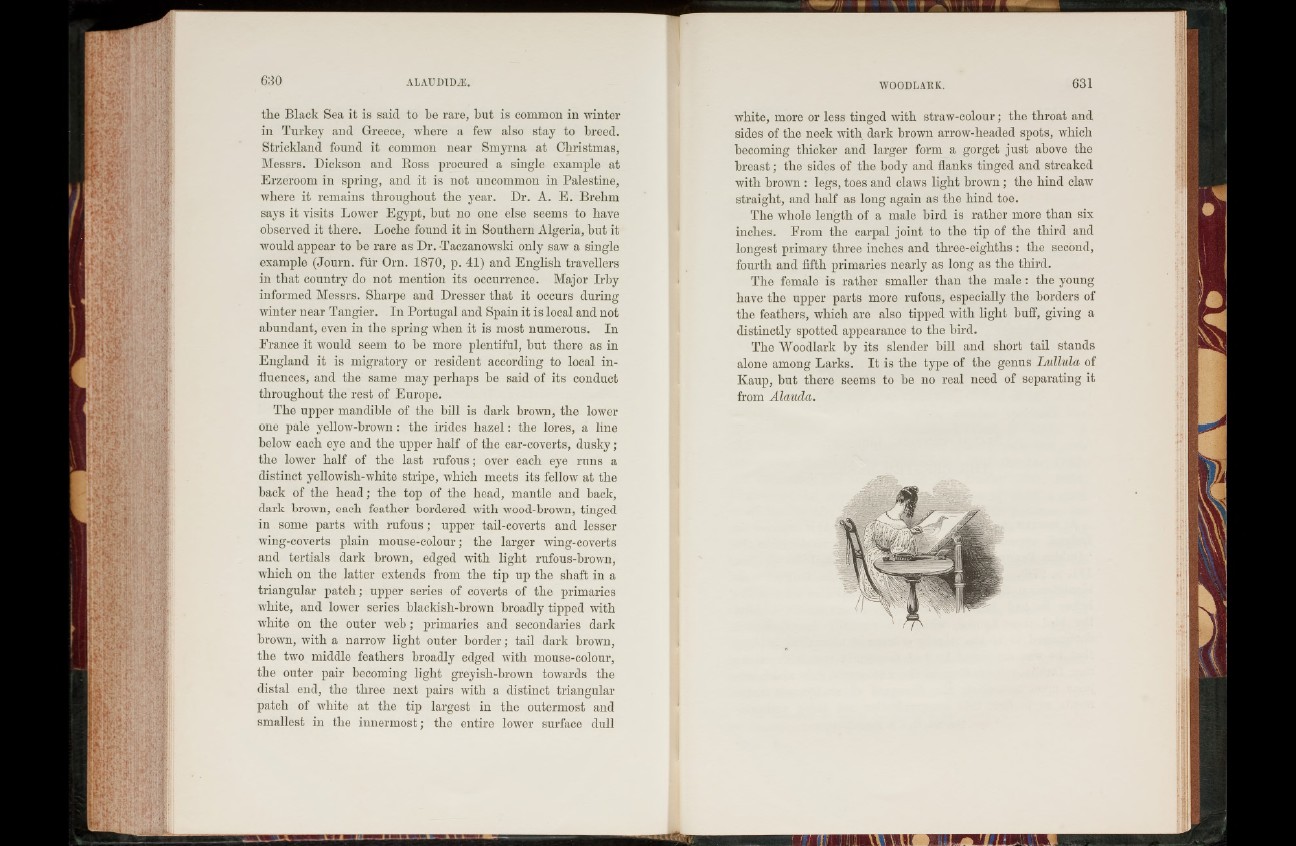
the Black Sea it is said to be rare, hut is common in winter
in Turkey and Greece, where a few also stay to breed.
Strickland found it common near Smyrna at Christmas,
Messrs. Dickson and Ross procured a single example at
Erzeroom in spring, and it is not uncommon in Palestine,
where it remains throughout the year. Dr. A. E. Brehm
says it visits Lower Egypt, hut no one else seems to have
observed it there. Loclie found it in Southern Algeria, hut it
would appear to he rare as Dr. Taczanowski only saw a single
example (Journ. fiir Orn. 1870, p. 41) and English travellers
in that country do not mention its occurrence. Major Irby
informed Messrs. Sharpe and Dresser that it occurs during
winter near Tangier. In Portugal and Spain it is local and not
abundant, even in the spring when it is most numerous. In
France it would seem to he more plentiful, hut there as in
England it is migratory or resident according to local influences,
and the same may perhaps he said of its conduct
throughout the rest of Europe.
The upper mandible of the hill is dark brown, the lower
one pale yellow-brown : the irides h az el: the lores, a line
below each eye and the upper half of the ear-coverts, dusky ;
the lower half of the last rufous; over each eye runs a
distinct yellowish-white stripe, which meets its fellow at the
back of the head; the top of the head, mantle and back,
dark brown, each feather bordered with wood-brown, tinged
in some parts with rufous; upper tail-coverts and lesser
wing-coverts plain mouse-colour; the larger wing-coverts
and tertials dark brown, edged with light rufous-brown,
which on the latter extends from the tip up the shaft in a
triangular patch; upper series of coverts of the primaries
white, and lower series blackish-brown broadly tipped with
white on the outer web; primaries and secondaries dark
brown, with a narrow light outer border; tail dark brown,
the two middle feathers broadly edged with mouse-colour,
the outer pair becoming light greyish-brown towards the
distal end, the three next pairs with a distinct triangular
patch of white at the tip largest in the outermost and
smallest in the innermost; the entire lower surface dull
white, more or less tinged with straw-colour; the throat and
sides of the neck with dark brown arrow-headed spots, which
becoming thicker and larger form a gorget just above the
breast; the sides of the body and flanks tinged and streaked
with brown : legs, toes and claws light brown; the hind claw
straight, and half as long again as the hind toe.
The whole length of a male bird is rather more than six
inches. Erom the carpal joint to the tip of the third and
longest primary three inches and three-eighths: the second,
fourth and fifth primaries nearly as long as the third.
The female is rather smaller than the m a le: the young
have the upper parts more rufous, especially the borders of
the feathers, which are also tipped with light buff, giving a
distinctly spotted appearance to the bird.
The Woodlark by its slender bill and short tail stands
alone among Larks. I t is the type of the genus Lullula of
Kaup, but there seems to be no real need of separating it
from Alaucla.